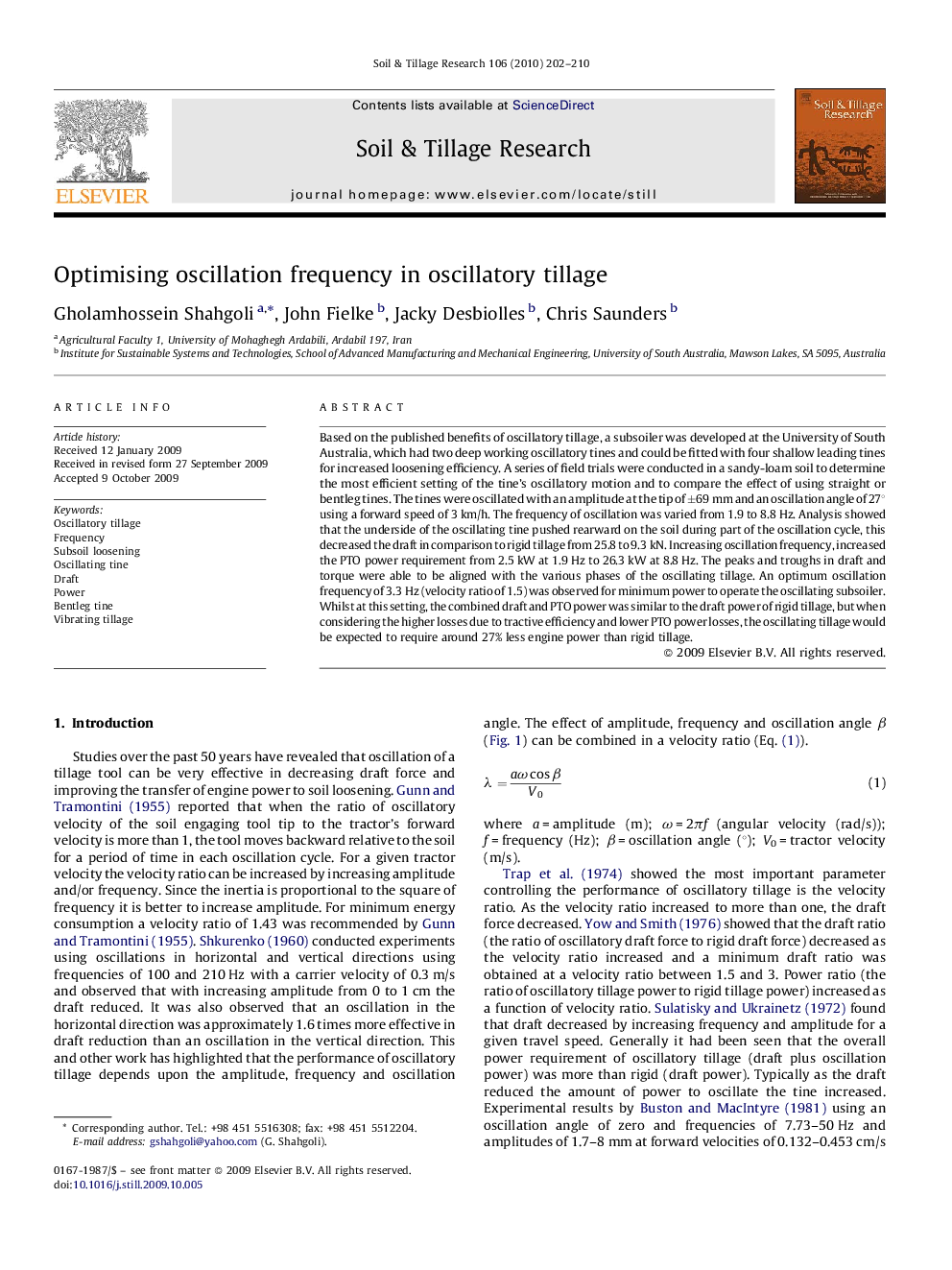| Article ID | Journal | Published Year | Pages | File Type |
|---|---|---|---|---|
| 306285 | Soil and Tillage Research | 2010 | 9 Pages |
Based on the published benefits of oscillatory tillage, a subsoiler was developed at the University of South Australia, which had two deep working oscillatory tines and could be fitted with four shallow leading tines for increased loosening efficiency. A series of field trials were conducted in a sandy-loam soil to determine the most efficient setting of the tine's oscillatory motion and to compare the effect of using straight or bentleg tines. The tines were oscillated with an amplitude at the tip of ±69 mm and an oscillation angle of 27° using a forward speed of 3 km/h. The frequency of oscillation was varied from 1.9 to 8.8 Hz. Analysis showed that the underside of the oscillating tine pushed rearward on the soil during part of the oscillation cycle, this decreased the draft in comparison to rigid tillage from 25.8 to 9.3 kN. Increasing oscillation frequency, increased the PTO power requirement from 2.5 kW at 1.9 Hz to 26.3 kW at 8.8 Hz. The peaks and troughs in draft and torque were able to be aligned with the various phases of the oscillating tillage. An optimum oscillation frequency of 3.3 Hz (velocity ratio of 1.5) was observed for minimum power to operate the oscillating subsoiler. Whilst at this setting, the combined draft and PTO power was similar to the draft power of rigid tillage, but when considering the higher losses due to tractive efficiency and lower PTO power losses, the oscillating tillage would be expected to require around 27% less engine power than rigid tillage.
